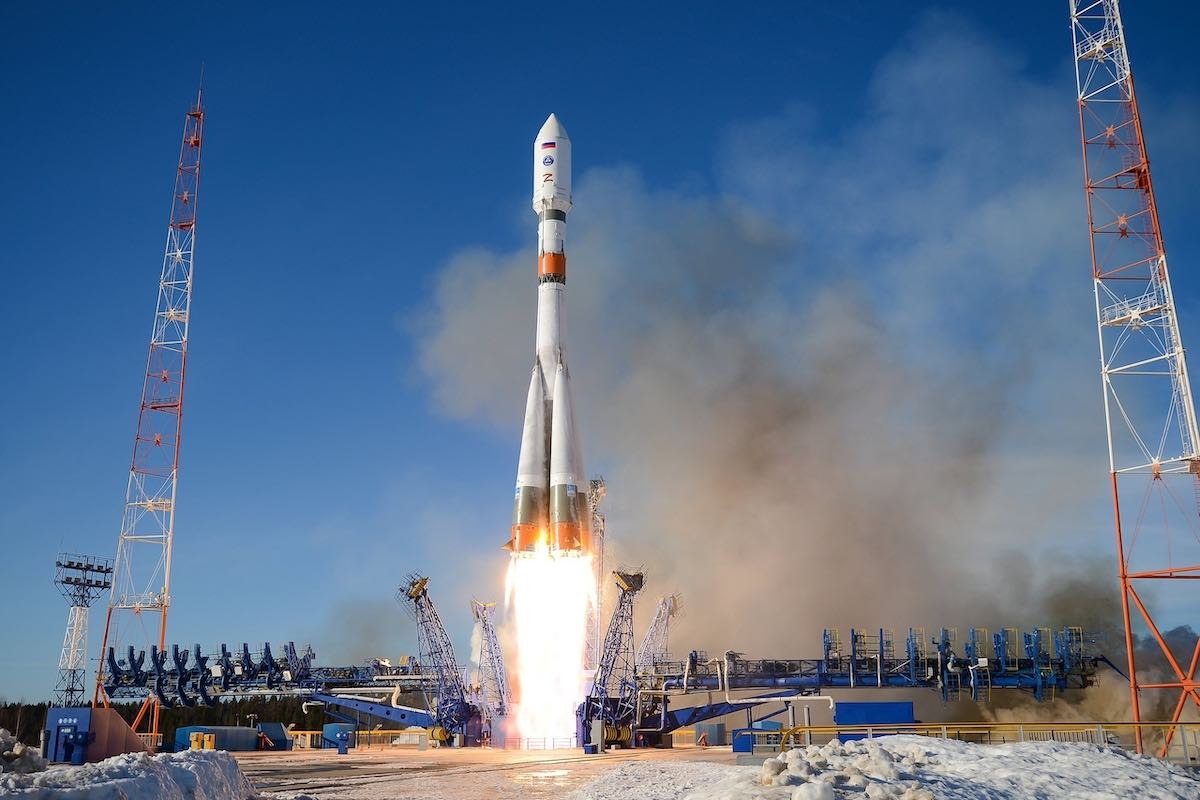Moscow has reportedly devised a plan involving a space rocket packed with explosives to strike Kyiv or another major Ukrainian urban center.
According to German tabloid Bild, it acquired recordings of conversations between the Russian space agency Roskosmos, its head Dmitry Rogozin, and Dmitry Baranov, the present leader of Roskosmos subsidiary, Progress Space Rocket Center.
The Progress Space Rocket Center, a government-owned entity in Russia, specializes in producing launch vehicles that serve both crewed missions and payloads from other countries. These launch vehicles are essential for transporting spacecraft to the International Space Station (ISS).
Based on classified phone recordings, as reported by Bild, senior Russian officials explored the idea of transforming a Soyuz space rocket into “a mega-weapon against Ukraine.”
The purported strategy, which involved Russia’s space experts, is part of a larger plot by a group of prominent Russian figures and scientists who seek to carry out “a mega-terrorist attack on Ukraine to make an impression on dictator Putin.”
Their plan revolves around retrofitting a civilian Soyuz launch vehicle, preventing it from reaching orbit upon launch and causing it to crash into a major Ukrainian city while carrying a substantial payload of explosives.
The report suggests the Ukrainian capital may be the primary target in this potentially catastrophic scenario.

The covert telephone recordings involving prominent Russian officials and scientists establish that deliberations on this plan took root in early January 2023.
During these conversations, Dmitry Rogozin and Dmitry Baranov explored the option of launching a Soyuz space rocket equipped with explosives from Russia’s Plesetsk spaceport in northwestern Russia, near Arkhangelsk, as an alternative to launching it from the Vostochny cosmodrome situated on the Chinese border.
This alternative launch site was considered to facilitate a greater capacity for carrying explosives on the rocket.
According to the report, in a wiretapped phone conversation, Dmitry Baranov informed Dmitry Rogozin that the payload of explosives on board the rocket would be 7.5 tons when launched from the eastern direction and 10 tons when launched from the northern direction. For safety considerations, they could subtract one ton from each, resulting in 6.5 tons and 9 tons, respectively.
Hurdles In Adapting Space Rocket For Targeting Ukraine
In the same conversation, Baranov mentioned that the 50-meter rocket could be directed as needed but warned of a challenging technical issue regarding high atmospheric temperatures during re-entry.
He explained that no existing Russian heavy high-explosive bombs or guided warheads meant for the space rocket could withstand the supersonic re-entry temperatures. Rogozin pledged to find a solution and consult Yuri Solomonov, a missile systems designer.
Rogozin also discussed the risk of rocket parts crashing into Russia and the need for more precise calculations regarding the missile’s impact location in Ukraine.
When Rogozin inquired about the necessary preparation time, Baranov estimated it would take approximately six months. The plan was also reportedly presented to Putin on January 16. However, his response to it remains undisclosed.
In a conversation with EurAsian Times, Paul Szymanski, a seasoned authority in the realm of space warfare, was skeptical regarding the newly circulated report. Szymanski has a wealth of experience collaborating with multiple US military branches such as the Air Force, Army, Navy, Marines, and various civilian organizations, including NASA, DARPA, and FEMA.
Szymanski elaborated that it is imperative to consider that objects re-entering Earth’s atmosphere from space do so at exceptionally high hypersonic velocities — a capability that Russia has been adeptly leveraging to significant advantage in the Ukrainian theater of operations.
Yet, the reported Russian plans do not appear to contradict the “Space Treaty” of January 27, 1967, which has received ratification from the majority of countries around the world.
This treaty explicitly bans the placement of nuclear weapons or any other weapons of mass destruction in Earth’s orbit or outer space. However, the treaty does not prohibit deploying conventional weapons in orbit.
Consequently, launch vehicles converted for warhead installation are unlikely to be categorized as weapons of mass destruction under the terms of this treaty.
A Ukrainian media outlet pointed out that the predominant Russian rocket systems belong to the R-7 family, including its subcategory, the Soyuz rockets.
In the context of potential strikes on Ukraine, these rockets would probably be launched on a ballistic trajectory.
With an average launch weight of 313 tons, the Soyuz rocket can carry up to 7.1 tons of payload, sufficient, for instance, for accommodating a significant number of units such as Iskander, Tochka, or likely combined explosive devices.
In addition to the immediate impact upon ground impact, one must consider the blast effect resulting from the rocket body’s debris and the detonation of unused toxic rocket fuel.
Nonetheless, several unresolved questions linger regarding the computation of the rocket’s flight path, control capabilities, hull stability during atmospheric re-entry, and the precision of damage.
- Contact the author at ashishmichel(at)gmail.com
- Follow EurAsian Times on Google News